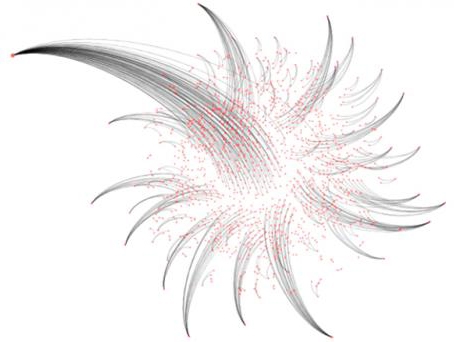FEATURE18 April 2013
All MRS websites use cookies to help us improve our services. Any data collected is anonymised. If you continue using this site without accepting cookies you may experience some performance issues. Read about our cookies here.
FEATURE18 April 2013
Social media monitoring tools typically focus on ‘crude’ measures of volume – and in doing so they ignore huge amounts of valuable contextual data, says Face’s innovation chief Francesco D’Orazio. Interview by Brian Tarran.

There’s a lot more to a single Tweet than meets the eye, says Francesco D’Orazio, chief innovation officer at Face. There’s the standard 140 characters of content, of course, but dig into the code and each Tweet comes packed with a host of valuable information that can put both the Tweet – and the Tweeter – in context.
D’Orazio says there are enough lines of code behind a single tweet to fill up two pages of A4. But most of it gets ignored, he says. “What social media monitoring platforms typically do is look at the content bits of the code, and ignore most of everything else that’s available publicly. So our idea was to start using this data to be able to provide context around the content.”
A basic example of something that doesn’t typically get indexed by social media monitoring platforms is the biography or profile of an author, he explains. “The API is giving you that data. If you don’t index it you can’t use it, but by indexing it we can search, for example, for mums who have been discussing the recent horsemeat scandal on Twitter.”
“What social media monitoring platforms typically do is look at the content bits of the code, and ignore most of everything else that’s available publicly”

Raising the volume
D’Orazio has spent the past several years developing the platform where these sorts of searches can take place. Pulsar TRAC, released today, is an overhaul of Face’s previous social media research platform. It’s been rebuilt for big data, he says. The early version – which was used by mobile provider O2 among others – was created to support Face’s consultancy offer to clients but it could only handle limited amounts of data.
“Once we started to look at stuff other than content, we realised we needed big data infrastructure to be able to deal with that,” says D’Orazio. “One million bits of conversation in social media equals almost 10 gigabytes of data on our system. Those conversations are mostly text based, so you can imagine there’s a lot of other data there: there’s metadata that we add, but other things like the social graph, the interest graph, demographics and behavioural data – all things that we can use to analyse the content in different ways.”
D’Orazio takes Research through a demo of TRAC, exploring real-time reactions to the horsemeat debacle. General discussion on that topic has died down in recent weeks, meaning volume of mentions has fallen to a fairly low, stable level – save for two noticeable spikes. They are big spikes, D’Orazio says, but the data is misleading. He hits a button and recalculates the data to show levels of visibility – a measure of those potentially exposed to the conversation based on visibility scores assigned to each individual Twitter account.
Common sense dictates that not all Tweets are created equal. The BBC carries much greater weight than one of its followers might, but such nuance is not reflected in volume metrics. D’Orazio explains that the first peak is a widely-syndicated Daily Telegraph article, the second a joke relating to the Grand National horse race. Using visibility as a measure, the first peak remains but the second has disappeared. “Crude metrics like volume only tell half the story,” says Job Muscroft, global chief operating officer.
A bundle visualisation, showing the relationship between keywords relating to the horsemeat scandal. Click for the full size image.
Social panels?
Face sees other limitations with social media monitoring that it hopes Pulsar TRAC – an acronym of Topic, Reach, Audience and Content – will address. For starters, D’Orazio says users can mine social media data either by individual Tweeters or groups of them, with Pulsar using the personal characteristics they share in their biographies to identify them.
D’Orazio suggests a company might use their segment screeners to find relevant people online and keep tabs on what they are talking about on an ongoing basis. “In the future you might ask yourself the question, ‘Are we going to build consumer panels anymore when the people we need are already in social?” says Muscroft.
“In terms of where we’re going with this suite of products, there will be a product that allows you to start linking people in social to work with them in other research environments. But being able to track groups of people online is really powerful and that is where the industry will start to move I think.”
Another aspect of Pulsar TRAC is the ability to monitor the spread of a single URL across the social web. This is useful for advertising assessment, D’Orazio says. As a proof of concept, Face last year worked with Leith and Blonde and used the Topsy API to track the spread of a YouTube link for a new Irn-Bru ad. The link was seeded to a single Tweeter, Rachel from Motherwell (@larachie) and Face tracked what happened next (see below). You can read the full case study on the Blonde blog.
2 Comments
Content In Context
11 years ago
Brian - Thanks, very helpful article - have you checked out what ThoughtWeb is doing in analytics? I also love the title of this post! It's actually the name of my blog, covering social media and other topics relevant to the Information Age. Please take a look some time: http://contentincontext.me/2013/05/07/social-media-finding-its-own-level/
Like Reply Report
Sue Hansen
11 years ago
What content analytic tools are out there? Specifically free online tools? Thanks
Like Reply Report